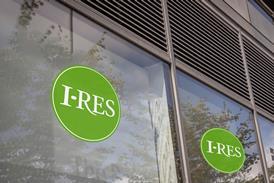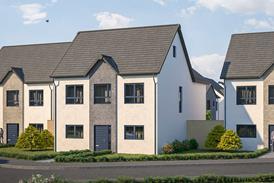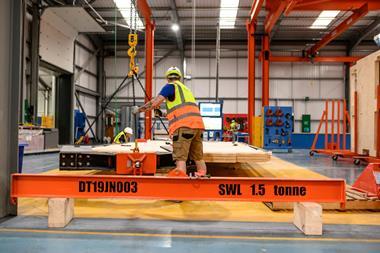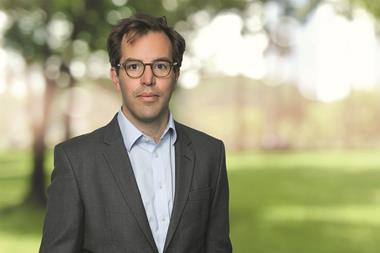Last month I toured the almost complete JJ Mack Building in Farringdon, guided by Gerald Kaye, chief executive of its developer, Helical.

It is, by any measure, an impressive place to visit. The 200,000 sq ft, 10-storey office-led development is close to the new Elizabeth line station and boasts a tally of sustainability credentials, including BREEAM ‘Outstanding’ and five-star NABERS ratings.
Eye-catching features include a five-storey lightwell bringing daylight into the heart of the structure, and 9,000 sq ft of terraces giving unbroken views over the historic rooftops of Smithfield Market.
Equally impressive is the ground-floor bike store, with street-level access and space for 426 bicycles, complete with charging points for e-bikes, a bike-wash facility and a spanner-equipped repair station. An adjacent corridor leads to expansive changing rooms with a health-club vibe, offering branded towels, 30 shower cubicles and 682 lockers of various sizes.
The scale and ambition of these amenities is striking, underscoring how expectations have changed as hospitality thinking has seeped ever more strongly into the office sector. Thankfully, those days are gone when the priority was cramming as many people as possible behind ranks of identical desks.
The past 10 years have seen “a complete change”, Kaye told me as we chatted in the new building’s hotel-style lobby. “If you were letting a building in central London, the chief exec and directors would turn up and the first question would be: ‘Where can we park our cars?’ Now, nobody asks about car parking at all. Nobody wants it.
“What they want to know is: ‘How can my staff arrive, where can they park their bicycles, where can they have a shower? What’s the amenity in the building? What’s the quality of the building and how sustainable is it?’”
That shift in emphasis from car parks to bike stores is now reinforced by the more recent transition to hybrid working. As we explore this week, effective working patterns have become a contentious topic that has yet to settle.
An employer’s view of what is required to support a productive mix of remote and office working may not necessarily align with the needs of the average employee. And, indeed, there may be no such thing as an average employee: expectations differ markedly between established staff and recent recruits, and among older and younger generations.
As Leeds University Business School academic Dr Matthew Davis explains: “Unfortunately, there is no clear answer to ‘how many days should I come to the office?’ … There is no universal sweet spot.”
What is clear is that base expectations are changing, and that employers that provide a pleasant, well-equipped, productive space for those days when people do come into the office will be at an advantage in recruitment and retention. And equally, building owners able to respond to that demand will be best placed to attract and retain good tenants.
Grosvenor Property UK chief James Raynor puts it this way: “For big companies, property as a cost versus their staff costs is relatively minor, so investing in property that offers great amenity in a great location, great transport and all that kind of stuff is, in reality, an investment in your staff.”
Happily, the office of the future is not going to be the kitchen table, five days a week. But it won’t resemble the serried workstations of the past, either.
































No comments yet